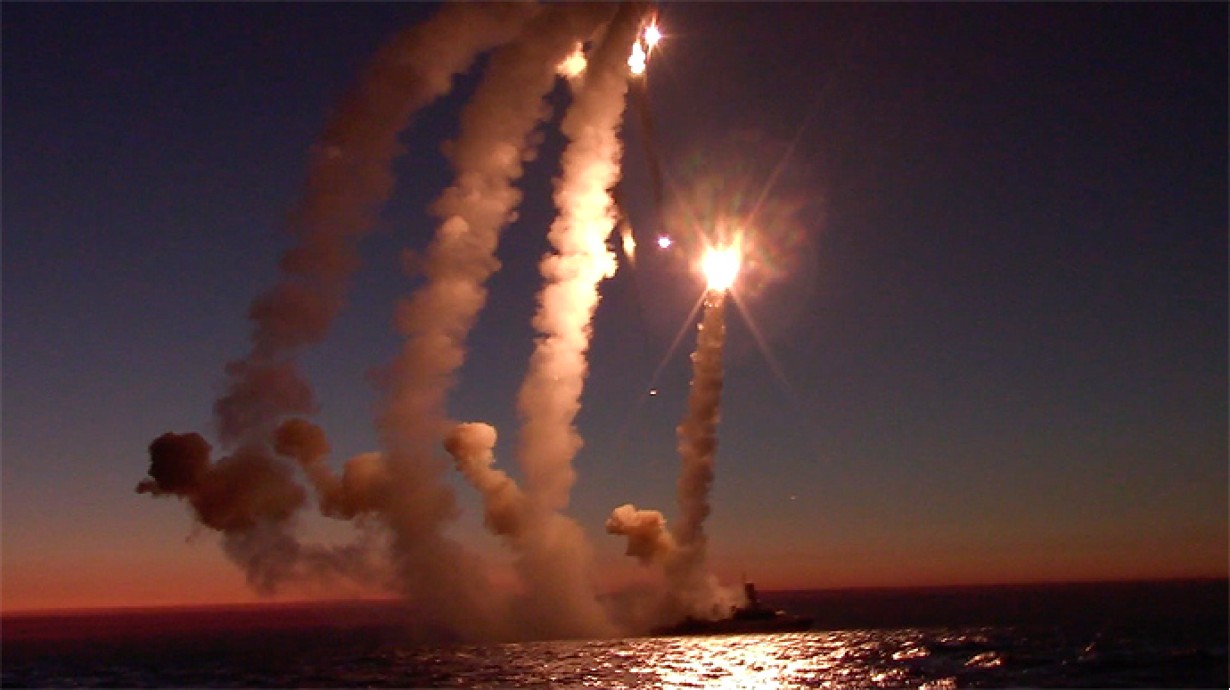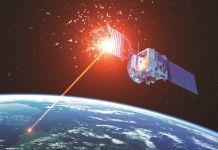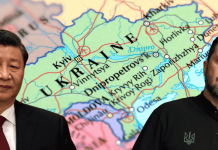Russian missiles that struck Ukrainian power and energy infrastructure in Kiev/Kyiv in late November were freshly manufactured just after the West imposed sanctions on it following the war and were not from an older stockpile.
The NYT confirmed EurAsian Times analysis that Russian cruise missile production remains unaffected by US sanctions. Some Kh-101 cruise missiles used to strike Ukraine’s critical infrastructure in November were produced in October 2022!
Researchers from the Conflict Armament Research (CAR) reached a conclusion based on studying the serial numbers found on the missile debris, which gave an idea of the batch and time of manufacture.
Russia has widely used the air-launched Kh-101 cruise missile (ALCM) to destroy Ukrainian targets from a standoff distance, some of which previously included civilian-military infrastructures like Ukrainian armament factories and command centers.

Experts examined remnants of Kh-101 cruise missiles found in Kyiv/Kiev, the capital, after an attack on November 23 that hit the electricity supply, causing massive outages in large parts of the country.
The markings show one of the missiles to have been made this summer, while another was completed after September.
The findings also highlight how Russia has continued to find ways to acquire semiconductors and other electronic materials despite the sanctions. The only other possibility is that it had amassed massive stockpiles much before the war began, anticipating Western sanctions that would block its access to such devices.
The Kh-101/Kh-102 is a line of conventional and nuclear-capable stealth air-launched cruise missiles (ALCM). They are designed to defeat air defense systems by flying at low, terrain-hugging altitudes to avoid radar systems.
The Kh-101 carries a conventional warhead, while the Kh-102 is believed to have a 250 kt nuclear payload. Some military experts describe them as low-observable missiles.
What Does The Report Say
The New York Times (NYT) reported the findings by a Britain-based independent group, Conflict Armament Research (CAR). CAR specializes in tracking & analyzing weapons and ammunition trails in wars and conflict zones.
CAR researchers were in the country at the invitation of Ukrainian security agencies.
The Kh-101 missiles were marked with a 13-digit numerical sequence. “CAR believes that the first three digits represent the factory where the missile was made, followed by another three-digit code indicating which of two known versions of the Kh-101 it is and two digits indicating when it was manufactured,” said the NYT report.
A final string of five numbers is believed to denote the missile’s production batch and serial number. However, it could not be determined whether the Kh-101 remnants were from missiles that successfully hit their targets or were shot down before they struck.
The CAR’s numerical research also aligned with the independent research by Polish journalist Piotr Butowski, who specializes in Russian military aviation and ground systems.
“The first three digits are always ‘315’ — this is the production facility code. Kh-101 missiles are developed and manufactured by the Raduga company in Dubna near Moscow,” Butowski said in an email to NYT.
Russia Uses Western Devices – Failure or Spite?
Russia can still produce cruise missiles because the flow and sale of western chips and advanced electronics continued, despite the severe sanctions.
Russia has long relied on sophisticated US electronic, and computer circuitry devices in its weapons, which the Royal United Service Institute (RUSI) discovered had still found their way into Russian missiles even after Moscow began its war.
Electronic components like microcontrollers, programmable chips, and signal processors from American giants like including Texas Instruments Inc; Altera, owned by Intel Corp; Xilinx, owned by Advanced Micro Devices Inc (AMD); Maxim Integrated Products Inc (Analog Devices Inc); and Cypress Semiconductor (Germany’s Infineon AG), have been found.

The companies, when confronted with the evidence of their products in Russian missiles, attributed them to orders before the war, shipments already underway after the sanctions began, and sales to third-party buyers in other countries. These are the most difficult to track since Russia might use them to source electronics either legally or illegally.
CAR researchers found Western semiconductors in Russian military equipment like encrypted radios and laser range finders in four previous research trips to Kyiv/Kiev.
As for the Russian missiles, Damien Spleeters, who led the CAR investigation, said it would be difficult to say that the Russians are running short on weapons. “Those claims have been made since April.
So, we’re just pointing to the fact that these cruise missiles being made so recently may be a symptom of that, but it’s not a certainty.”
In other words, Russia might have begun running out of cruise missiles by late summer and hiked the production of the missiles, which were made available over the next few months.
Western experts were “surprised” upon seeing how, after the war, Russia’s economy and defense industry appeared to be not suffering.
Some noted that the country had been preparing for this scenario since 2014, when the first Donbas conflict erupted after Donetsk and Lugansk declared independence from Ukraine following the Euromaidan uprising in Kyiv.
- The author can be reached at satamp@gmail.com
- Follow EurAsian Times on Google News




